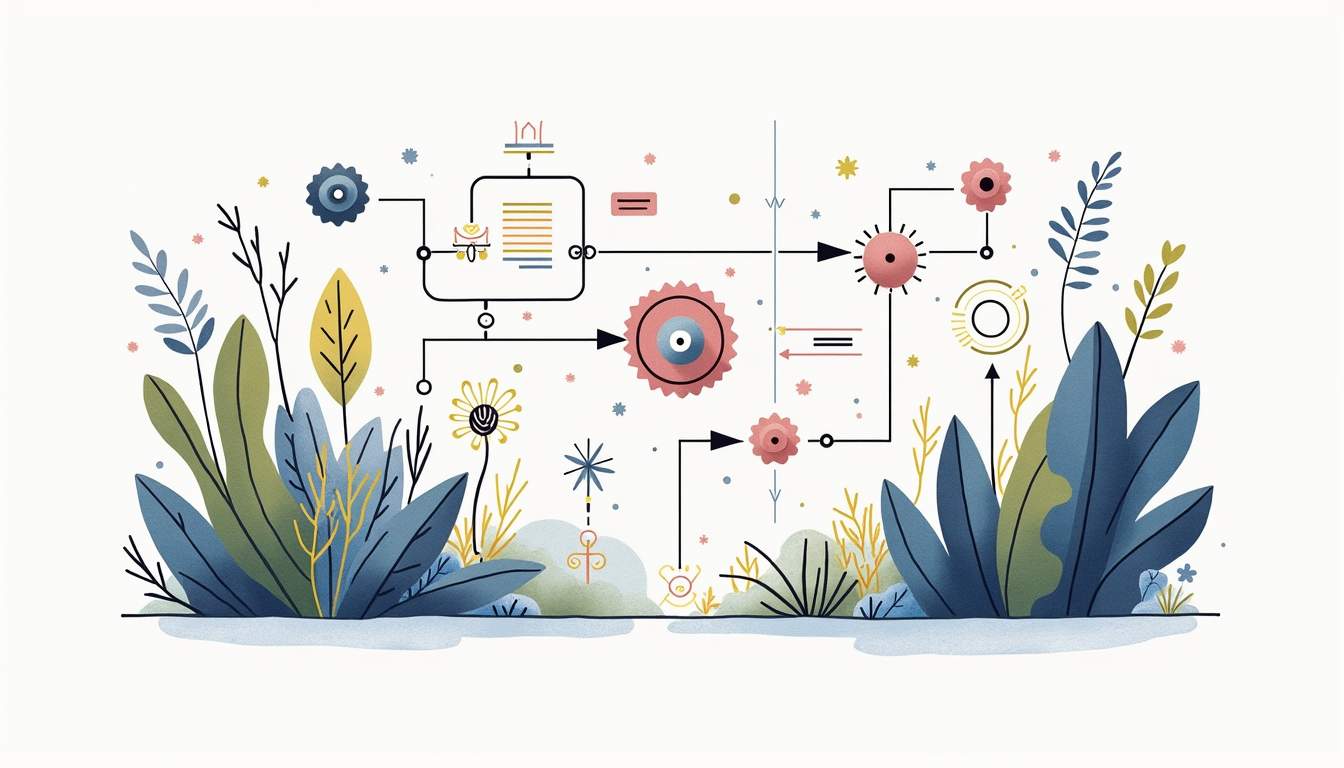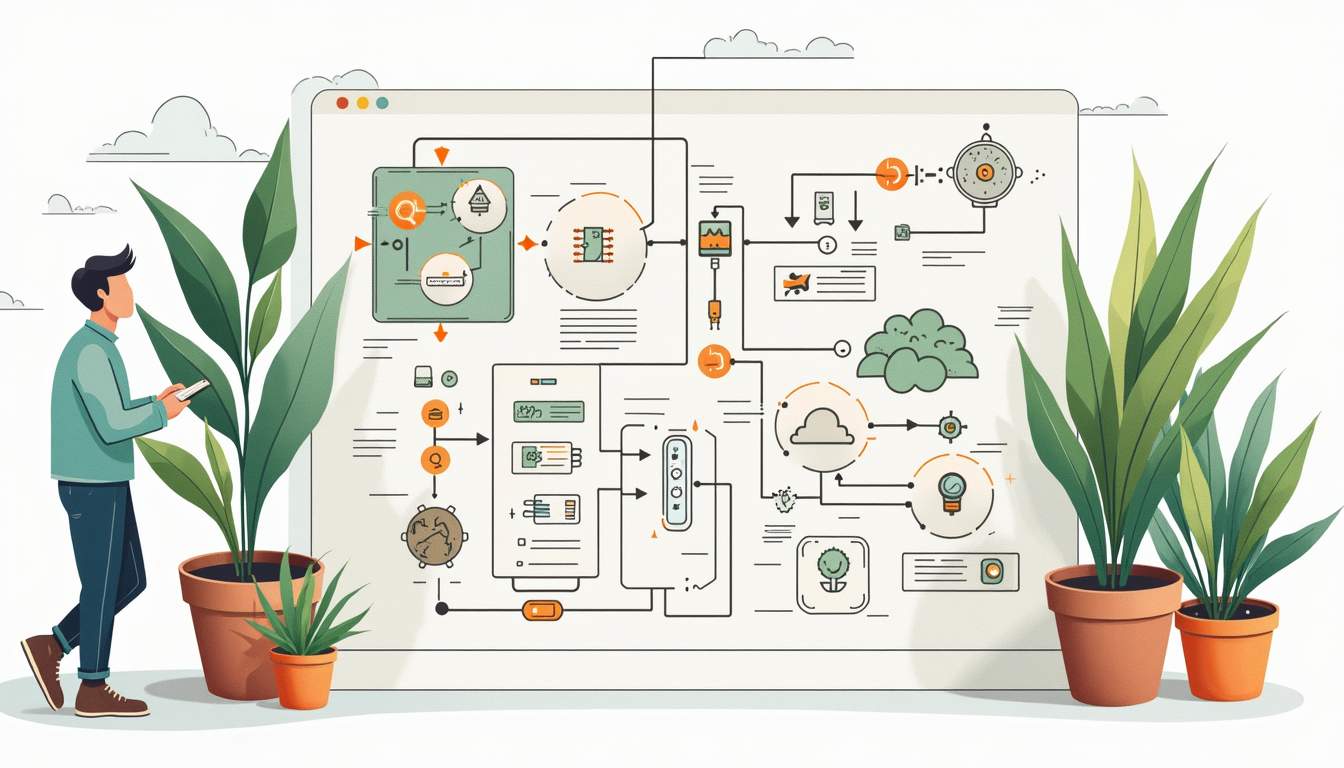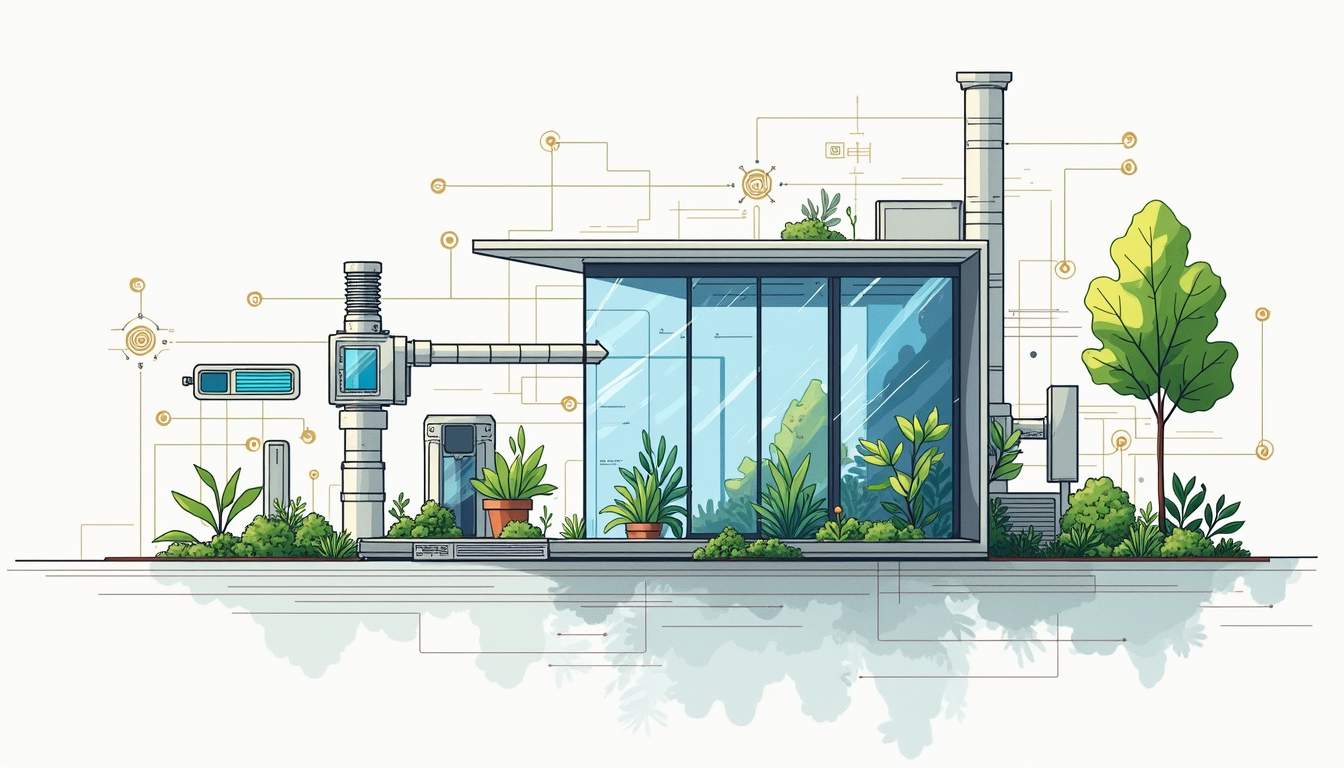Introduction to Control Systems
Control systems are integral components of modern engineering, enabling the management and regulation of dynamic systems. They are employed in various applications, from simple home heating systems to complex aerospace technologies. A control system takes input from sensors, processes that information, and generates output to actuators to achieve desired outcomes. The primary goal is to maintain a system’s performance within specified limits, ensuring stability and efficiency.
In the context of cyberphysical systems (CPS), control systems play a crucial role in bridging the physical and digital worlds. CPS integrates computation, networking, and physical processes, allowing for real-time monitoring and control of physical systems through digital interfaces. This integration leads to enhanced automation, improved efficiency, and the ability to respond dynamically to changing conditions.
The design of control systems for cyberphysical plants involves a comprehensive understanding of both control theory and the specific characteristics of the physical processes being managed. This glossary entry will delve into the various aspects of control systems, focusing on their design, implementation, and the unique challenges posed by cyberphysical environments.
Fundamentals of Control Theory
Definition and Importance
Control theory is a branch of engineering and mathematics that deals with the behavior of dynamical systems. It provides the tools and methodologies necessary for designing controllers that can regulate system behavior to achieve desired objectives. The importance of control theory lies in its ability to enhance system performance, increase reliability, and ensure safety in various applications.

In control theory, systems are often modeled using mathematical equations that describe their dynamics. These models can be linear or nonlinear, time-invariant or time-variant, depending on the nature of the system. Control engineers utilize these models to design controllers that can adjust system inputs based on feedback from outputs, ensuring that the system behaves as intended.
Key concepts in control theory include stability, controllability, observability, and feedback. Stability refers to the ability of a system to return to equilibrium after a disturbance. Controllability indicates whether a system can be driven to a desired state using available inputs, while observability determines whether the internal state of a system can be inferred from its outputs. Feedback is a critical mechanism that allows systems to self-correct and maintain desired performance levels.
Types of Control Systems
Control systems can be broadly classified into two categories: open-loop and closed-loop systems. Open-loop systems operate without feedback; they execute a predetermined sequence of operations without adjusting based on output. An example of an open-loop system is a washing machine that runs through its cycles regardless of the cleanliness of the clothes.
In contrast, closed-loop systems, also known as feedback control systems, utilize feedback to adjust their operations based on the difference between the desired output and the actual output. This feedback loop allows for real-time adjustments, improving accuracy and stability. Examples of closed-loop systems include thermostats that adjust heating based on temperature readings and autopilot systems in aircraft that maintain altitude and heading.
Within these categories, control systems can further be classified into various types, including proportional, integral, and derivative (PID) controllers, which combine different control actions to optimize performance. Each type has its advantages and is suited for specific applications, depending on the system dynamics and performance requirements.
Cyberphysical Systems: An Overview
Definition and Characteristics
Cyberphysical systems (CPS) are engineered systems that tightly integrate computation, networking, and physical processes. They are characterized by their ability to monitor and control physical processes in real-time through digital interfaces. CPS can be found in various domains, including manufacturing, transportation, healthcare, and smart cities.
The defining characteristics of CPS include their reliance on sensors and actuators for data collection and control, the use of communication networks for data exchange, and the application of advanced algorithms for decision-making and control. This integration allows CPS to achieve higher levels of automation, efficiency, and adaptability compared to traditional systems.
One of the key challenges in CPS design is ensuring the reliability and security of the system. As these systems become increasingly interconnected, they are also more vulnerable to cyber threats. Therefore, robust security measures and fault-tolerant designs are essential to protect against potential failures and attacks.
Applications of Cyberphysical Systems
Cyberphysical systems have a wide range of applications across various industries. In manufacturing, CPS enable smart factories where machines communicate with each other and with human operators to optimize production processes. This leads to increased efficiency, reduced downtime, and improved quality control.
In transportation, CPS are used in intelligent transportation systems that enhance traffic management, improve safety, and reduce congestion. Autonomous vehicles rely heavily on CPS to navigate and make real-time decisions based on sensor data and communication with other vehicles and infrastructure.
Healthcare is another domain where CPS have made significant advancements. Remote patient monitoring systems utilize CPS to collect health data from patients and transmit it to healthcare providers for analysis and intervention. This capability enhances patient care and allows for timely responses to medical emergencies.
Designing Control Systems for Cyberphysical Plants
System Modeling
The first step in designing a control system for a cyberphysical plant is system modeling. This involves creating a mathematical representation of the physical processes that need to be controlled. Accurate models are crucial for effective controller design, as they provide insights into system behavior and dynamics.

Modeling can be performed using various techniques, including differential equations, state-space representations, and transfer functions. The choice of modeling technique depends on the complexity of the system, the level of detail required, and the specific control objectives. For example, linear models are often used for systems that exhibit linear behavior, while nonlinear models may be necessary for more complex systems.
Once a model is established, it can be validated through simulation and experimentation. This validation process ensures that the model accurately reflects the real-world behavior of the system, allowing for reliable controller design and performance prediction.
Controller Design
Controller design is a critical phase in the development of control systems for cyberphysical plants. The design process involves selecting appropriate control strategies and tuning controller parameters to achieve desired performance metrics, such as stability, response time, and accuracy.
Common control strategies include PID control, state feedback control, and optimal control. PID controllers are widely used due to their simplicity and effectiveness in a variety of applications. State feedback control involves using the system’s state information to design controllers that can stabilize and optimize performance. Optimal control seeks to minimize a cost function that represents the trade-offs between different performance criteria.
During the design process, engineers must also consider the impact of uncertainties and disturbances on system performance. Robust control techniques are often employed to ensure that the system can maintain performance despite variations in system parameters or external conditions. This is particularly important in cyberphysical systems, where real-time data and dynamic environments can introduce significant variability.
Implementation and Testing
Hardware and Software Integration
Once the control system has been designed, the next step is implementation. This involves integrating hardware components, such as sensors, actuators, and controllers, with software algorithms that execute the control logic. The integration process requires careful consideration of communication protocols, data formats, and system architecture to ensure seamless operation.
In cyberphysical systems, the hardware and software components must work together in real-time to achieve the desired control objectives. This often involves the use of embedded systems, which combine hardware and software in a single platform. Embedded systems are designed to perform specific control tasks and are commonly used in applications such as robotics, automotive systems, and industrial automation.
Testing is a crucial phase of implementation, as it verifies that the control system operates as intended under various conditions. Testing can be conducted through simulation, hardware-in-the-loop (HIL) testing, and real-world trials. Each testing method has its advantages and limitations, and a combination of approaches is often employed to ensure comprehensive evaluation of system performance.
Performance Evaluation
Performance evaluation is essential to assess the effectiveness of the control system in achieving its objectives. Key performance metrics include stability, response time, accuracy, and robustness. Stability analysis determines whether the system will remain stable under various operating conditions, while response time measures how quickly the system can react to changes in input or disturbances.
Accuracy is another critical metric, reflecting how closely the system output matches the desired output. Robustness evaluates the system’s ability to maintain performance despite uncertainties and variations in system parameters. Various techniques, such as root locus analysis, frequency response analysis, and Monte Carlo simulations, can be used to analyze these performance metrics.
Based on the results of performance evaluation, engineers may need to refine the control system design, adjust controller parameters, or implement additional features to enhance performance. Continuous improvement is a key aspect of control system design, particularly in the context of cyberphysical systems, where technology and requirements are constantly evolving.
Challenges in Cyberphysical Plant Control
Security and Privacy Concerns
As cyberphysical systems become increasingly interconnected, security and privacy concerns have emerged as significant challenges. The integration of digital technologies with physical processes creates vulnerabilities that can be exploited by malicious actors. Cyber attacks on CPS can lead to severe consequences, including system failures, safety hazards, and data breaches.
To address these challenges, engineers must implement robust security measures throughout the design and implementation phases. This includes securing communication channels, employing encryption techniques, and implementing access controls to protect sensitive data. Additionally, regular security assessments and updates are essential to mitigate emerging threats and vulnerabilities.
Privacy concerns also arise in CPS, particularly in applications involving personal data, such as healthcare and smart homes. Ensuring that data is collected, stored, and transmitted in compliance with privacy regulations is critical to maintaining user trust and safeguarding sensitive information.
Interoperability and Standardization
Interoperability is another challenge in the design of cyberphysical systems. As CPS are often composed of components from different manufacturers and technologies, ensuring seamless communication and integration can be difficult. Lack of standardization in communication protocols and data formats can lead to compatibility issues, hindering the effectiveness of the control system.
To promote interoperability, industry standards and best practices must be established and adopted. Organizations such as the Institute of Electrical and Electronics Engineers (IEEE) and the International Organization for Standardization (ISO) play a vital role in developing standards that facilitate communication and integration among diverse CPS components.
Additionally, adopting open architectures and modular designs can enhance interoperability by allowing components to be easily replaced or upgraded without significant reengineering of the entire system. This flexibility is essential for adapting to evolving technologies and requirements in the rapidly changing landscape of cyberphysical systems.
Future Trends in Cyberphysical Plant Design
Advancements in Artificial Intelligence
The integration of artificial intelligence (AI) into cyberphysical systems is poised to revolutionize control system design and operation. AI algorithms can analyze vast amounts of data from sensors and other sources, enabling real-time decision-making and adaptive control strategies. This capability enhances the efficiency and effectiveness of control systems, allowing them to respond dynamically to changing conditions and optimize performance.

Machine learning techniques, a subset of AI, can be particularly beneficial in identifying patterns and trends in system behavior. By leveraging historical data, machine learning algorithms can improve predictive capabilities, enabling proactive maintenance and reducing downtime. This shift from reactive to proactive control strategies represents a significant advancement in the field of cyberphysical systems.
Furthermore, AI can enhance the security of cyberphysical systems by enabling anomaly detection and threat assessment. By continuously monitoring system behavior and identifying deviations from expected patterns, AI algorithms can help detect potential security breaches and initiate appropriate responses.
Integration of Internet of Things (IoT)
The Internet of Things (IoT) is another trend shaping the future of cyberphysical plant design. IoT devices, equipped with sensors and communication capabilities, can collect and transmit data from physical processes to cloud-based platforms for analysis and control. This connectivity enables real-time monitoring and control of systems, enhancing operational efficiency and enabling data-driven decision-making.
Incorporating IoT into cyberphysical systems allows for greater scalability and flexibility. Systems can be easily expanded by adding new IoT devices, and data from multiple sources can be aggregated to provide comprehensive insights into system performance. This capability is particularly valuable in applications such as smart cities, where data from various sensors can be used to optimize traffic management, energy consumption, and public safety.
However, the integration of IoT also presents challenges, particularly in terms of security and data management. Ensuring the integrity and confidentiality of data transmitted over IoT networks is critical to maintaining the reliability of cyberphysical systems. Additionally, effective data management strategies must be developed to handle the vast amounts of data generated by IoT devices.
Conclusion
Control systems are fundamental to the design and operation of cyberphysical plants, enabling the integration of physical processes with digital technologies. Understanding the principles of control theory, the characteristics of cyberphysical systems, and the challenges associated with their design is essential for engineers and practitioners in the field.
As technology continues to evolve, the future of cyberphysical plant design will be shaped by advancements in artificial intelligence, the integration of IoT, and the need for robust security measures. By embracing these trends and addressing the challenges, engineers can develop innovative control systems that enhance efficiency, safety, and reliability in a wide range of applications.
In summary, the field of control systems and cyberphysical plant design is dynamic and rapidly evolving, offering exciting opportunities for innovation and improvement. By staying informed about the latest developments and best practices, professionals can contribute to the advancement of this critical area of engineering.
Discover the Future of Cyberphysical Plant Design with Cybersort
Ready to take your cyberphysical plant design to the next level? At Cybersort, we specialize in unlocking the power of your plant data. Our platform is tailored to support the design, documentation, and security of your cyber-physical assets, enabling you to leverage real-time data for superior decision-making. Streamline your data management, fortify your data security, and boost operational efficiency with Cybersort. Don’t miss out on the opportunity to transform your control systems. Book a discovery call today and start your journey towards optimized cyberphysical plant performance.


